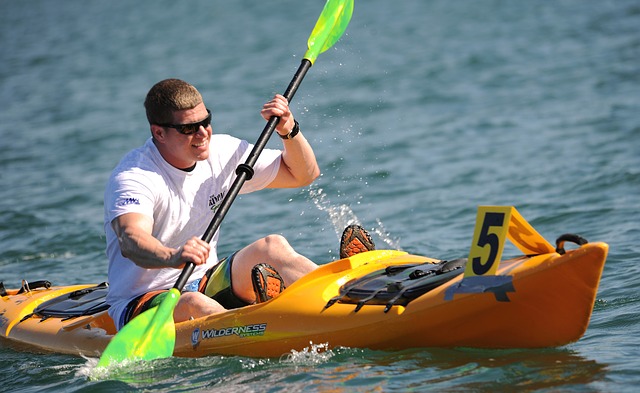Sport is as important for those who are aging as it is for the young. Although most people think that it is only the energetic youths who find pleasure in sports, it is amazing to discover just how much such an activity means for the elderly. The best thing to do to get the best out of sports, as an elderly person, is to engage in a team sport. This gives the necessary motivation, company, thrill; you will keep doing it for long, longer than you could with a solitary exercise.
For Jim DeVore, it was high school all over again.
There he was, fast footing around the court with his buddies, throwing everything into the game and giving it all for the team.
 It ultimately ended in defeat. But for DeVore, a 62-year-old Santa Rosa family physician, that tournament left him with an exhilaration he had not felt in more than 40 years.
It ultimately ended in defeat. But for DeVore, a 62-year-old Santa Rosa family physician, that tournament left him with an exhilaration he had not felt in more than 40 years.
There was a time when seniors were warned to take it easy and, at all costs, avoid injury. Keep it safe and light like walking or swimming. But as with so many cultural and social practices, Baby Boomers are forging a new norm for exercising. And that may include dialing back to the early life excitement of team sports.
“If you look at people who continue to participate in sports or physical activities for many, many years, they’re more likely to do it if they’re doing it with a group of people,” said Dr. Kirk Pappas, a sports medicine specialist for Kaiser Santa Rosa Medical Center.
Sourced From: http://www.pressdemocrat.com/news/2288936-181/team-sports-keeping-older-people?artslide=1
There are many benefits one can reap from engaging in sports at an old age, these activities are important for anyone who wants to keep some of the conditions that come with old age at bay. With sports you can minimize such risks as obesity, low immunity, high cholesterol and more importantly, to enhance dependence.
From the age of 50, muscle mass and overall strength are reduced by 40 up to 50% depending on everyone.
With ageing, shortness of breath gets higher, gaining weight is common and physical balance gets weaker. The elderly’s capacity to remain independant is reduced, falls risks are higher. Staying inactive could be risky for the elderly. In order to fight these consequences, the soft exercise can be a great therapy.
In this way, physical activity allows to:
Reduce falls risks
Reduce obesity risk
Reduce stress and prevent heart diseases
Contribute to the decrease of cholesterol
Fight against the osteoporosis
Improve the immune system
Maintain muscle mass
Create a social link, reduce the risk of depression
Exercise is good at old age, but a safe exercise is the best option to go by. Elderly people are usually vulnerable to fatigue, injuries, straining and many other issues which result from vigorous exercise. An exercise should be well outlined to take the participants step by step, for a realistic period of time, and considering the level of exhaustion the participants can take.
An optimal fitness program for the elderly should include exercises that focus on restoring the strength, flexibility, and endurance that tend to be lost with aging or age-related inactivity. It is best started with the guidance of a professional to ensure proper technique and safety.
Exercise against resistance or gravity helps to strengthen muscles; this includes floor exercises, weight training, or water sports such as swimming and “water aerobics”.
Most floor exercises are also considered ideal for improving flexibility; some of the better-known formal types include yoga, Feldenkreis, pilates, and calisthenics.
“Aerobic” – also known as “endurance” – exercise requires a minimum of 20 minutes each session, with regular, easy breathing throughout. Walking and swimming or “water aerobics” are considered ideal examples for the elderly, in part because they create less of a burden on joints and tendons compared with higher-impact activities.
Sourced From: http://www.safesport.co.uk/safeexercisefortheelderly.html






